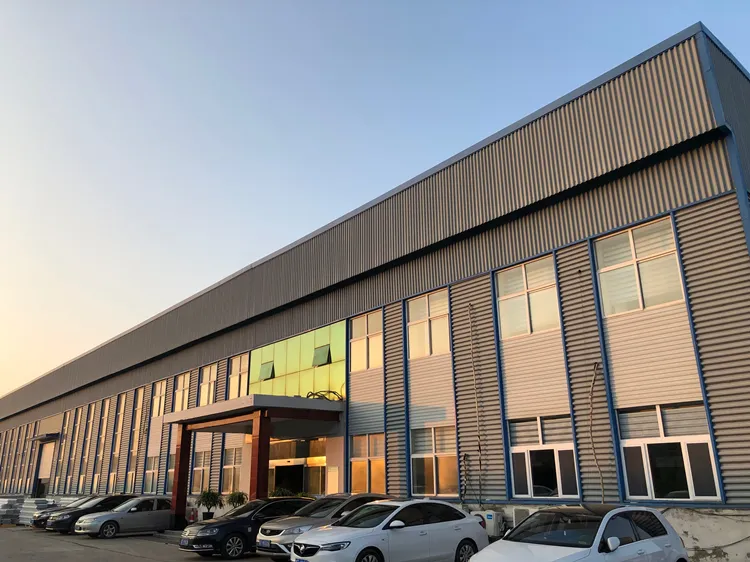loading...
- No. 9, Xingyuan South Street, Dongwaihuan Road, Zaoqiang County, Hengshui, Hebei, China
- admin@zjcomposites.com
- +86 15097380338
- Welcome to visit our website!
Innovative Solutions for GRP Grating Systems in Industrial Applications
Understanding GRP Grating Systems An In-depth Overview
GRP (Glass Reinforced Plastic) grating systems have gained significant popularity in various industries due to their remarkable strength-to-weight ratio, corrosion resistance, and versatility. This article aims to explore the fundamental aspects of GRP grating systems, including their composition, applications, benefits, and future trends.
What is GRP?
GRP, or Glass Reinforced Plastic, is a composite material made by embedding glass fibers in a resin matrix. This combination of materials results in a product that exhibits superior mechanical properties compared to conventional plastic or metal options. The glass fibers provide strength and stiffness, while the resin contributes to the material's flexibility and resistance to environmental degradation.
Composition of GRP Grating Systems
GRP grating systems are manufactured through a process of pultrusion or hand lay-up techniques. During pultrusion, continuous strands of glass fibers are drawn through a resin bath and then shaped into a specified profile. This process allows for the creation of consistent and durable products with a variety of shapes, such as square, rectangular, or triangular grids.
The resin used in GRP grating can vary, but it is commonly based on unsaturated polyester, epoxy, or vinyl ester. The choice of resin affects the overall properties of the grating, including its fire resistance, chemical resistance, and thermal stability. Additionally, additives can be incorporated to enhance UV stability and improve aesthetic qualities, allowing for a wider range of colors and finishes.
Applications of GRP Grating Systems
GRP grating systems are widely used across numerous sectors, including
1. Industrial Facilities They are commonly employed in factories and chemical plants where exposure to corrosive substances is prevalent. GRP grating's resistance to chemicals, acids, and alkalis makes it an ideal choice for walkways, platform surfaces, and drainage applications.
2. Wastewater Treatment Plants GRP grating systems are extensively used in wastewater treatment facilities due to their superior corrosion resistance and low maintenance requirements. These gratings support walkways and access platforms, providing safe access to equipment.
3. Marine Applications The maritime industry frequently utilizes GRP grating in shipbuilding, dockyards, and offshore platforms. The lightweight nature of GRP coupled with its resistance to saltwater corrosion is particularly advantageous in marine environments.
4. Architectural Solutions Beyond industrial applications, GRP grating systems are also utilized in architecture for aesthetic design elements. They can be integrated into flooring, staircases, and even decorative facades, offering unique visual appeal alongside functionality.
grp grating systems

Benefits of GRP Grating Systems
The advantages of GRP grating systems are manifold
- Corrosion Resistance As mentioned, GRP is highly resistant to rust and corrosion, making it an optimal choice for harsh environments.
- Lightweight GRP gratings are significantly lighter than steel or aluminum, which simplifies transportation and installation, while also reducing structural load requirements.
- Safety Many GRP grating products come with anti-slip finishes, enhancing safety in workplaces where wet or oily conditions are common.
- Customization GRP grating systems can be custom-designed to meet specific load requirements and to fit particular dimensions, offering flexibility for diverse applications.
- Sustainability GRP materials can be recycled and repurposed, reducing overall environmental impact and contributing to sustainable practices in construction.
Future Trends in GRP Grating Systems
The future of GRP grating systems looks promising, driven by advancing technologies and increasing demand for sustainable construction materials. Innovations in manufacturing processes and the development of higher-performance resins are set to enhance the strength, durability, and aesthetic appeal of GRP products.
Additionally, as more industries recognize the benefits of lightweight materials and seek eco-friendly solutions, GRP grating systems are likely to gain further traction. The ongoing push for sustainable development practices will likely lead to an increase in the adoption of GRP in both industrial and commercial applications.
Conclusion
In summary, GRP grating systems represent a significant advancement in materials technology, offering a unique blend of strength, durability, and versatility. With widespread applications across various sectors and continuous improvements on the horizon, GRP grating systems are undoubtedly an essential component of modern engineering solutions. As industries continue to evolve, so too will the innovations surrounding GRP, ensuring its place in a sustainable and efficient future.
-
The Rise of FRP Profiles: Strong, Lightweight, and Built to LastNewsJul.14,2025
-
SMC Panel Tanks: A Modern Water Storage Solution for All EnvironmentsNewsJul.14,2025
-
GRP Grating: A Modern Solution for Safe and Durable Access SystemsNewsJul.14,2025
-
Galvanized Steel Water Tanks: Durable, Reliable, and Ready for UseNewsJul.14,2025
-
FRP Mini Mesh Grating: The Safer, Smarter Flooring SolutionNewsJul.14,2025
-
Exploring FRP Vessels: Durable Solutions for Modern Fluid HandlingNewsJul.14,2025
-
GRP Structures: The Future of Lightweight, High-Performance EngineeringNewsJun.20,2025
